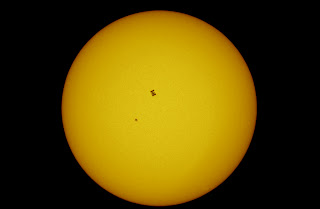Verdict: Go see it
Where: Business Design Centre, Islington
When: 18-22 January 2012
The London Art Fair is an annual coming together of over 100 galleries that take over the Business Design Centre for an extended weekend. These galleries cover both classical and contemporary art, and have something for everyone.
There is plenty of variety to prevent you getting bored; it’s just a question of whether your feet can keep up as there is a lot of ground to cover.
This can’t be like a normal review as this is not an exhibition but a chance to check out what galleries have available. I imagine most visitors are merely curious than serious art collectors as most pieces will set you back at least £10,000 and some ten times that amount.
Though there are works of notable artists like Damien Hirst, Bridget Riley, Chris Ofili and L.S. Lowry; it’s the lesser known artists that really shine here, so I’ve compiled a list of all those that stuck out for me.
This year there were many artists experimenting with photo collage, some notable examples include:
- Jane Ward takes photographs of her travel and layers them over each other on a computer before stripping away layers piece by piece to produce apocalyptic visions. Last year her collages were more realistic but this years she’s produced some that are rather more tongue-in-cheek with inverted and swirling landscapes that look like they would be at home in the film Inception.
- Tom Leighton specialises in creating seamless cityscapes with disparate landmarks. At first it will feel like you are looking at a picture of St. Mark’s square in Venice before you quickly realise that the Cathedrale Notre Dame should not be at the end of it, nor should St. Paul’s, the Burj Khalifah and Flatiron building be part of the same skyline. If they were that would be one magnificent skyline.
- Yves Krief uses a very similar take to Leighton but focuses on America and a post-apocalyptic landscape littered with wild animals. However, the colour palette used is much bolder than you would get with John Martin so there is a more light-hearted feel to it.
And the rest, in no specific order:
· Tessa Farmer was back again with her miniature skeletal fairies (with the wings of houseflies) continuing their war against nature. Farmer takes dead insects and the occasional mouse and creates miniature fairies and positions the two against each other in a macabre battle.
· Annie Morris has created a wall of clothes pegs each with a self-portrait of herself drawn on it – one for every day.
· John Stark’s paintings are similar to Krief’s works in that they also display apocalyptic visions with warm colours, however Stark’s work is much more darker as you’d be unlikely to see a blackened skeleton atop a pyre in Krief’s works.
· Jenny Pockley has created paintings of the London Skyline at night that look photorealistic from a distance but are clearly paintings up close.
· In contrast to Pockley, Alicia Dubnyckyj’s cityscapes are barely recognisable from up close but if you step back it becomes clear that it’s a view of London (pictured above) or Manhattan.
· Jim Whitty has created a country river scene with such bright yellow it feels as if you’re looking at the direct reflection of the sun and not a painting of it.
· Gigi Cifali photographs abandoned swimming pools so that they could easily be a setting for a horror movie.
· John Monks paints desolate scenes – an abandoned house and a shipwreck – but infuses them with such colour that he almost resurrects them.
· Peter Graham is another exponent of a bright palette but so much so that his café scenes are almost unrecognisable due to the glare given off by the painting.
· Joseph Klibansky’s ‘New tension’ overlays a black and white New York with the bright colours from a South East Asian river scene, highlighting the superiority of nature over industrialisation.
· Lisa Swerling is back again with her miniature sculptures of satirical scenes inside glass cabinets.
· Marco Crivello creates spheres of swirling colour that looks like alien worlds or the earth when it was first forming into a ball of molten rock.
Nobody can walk away from the London Art Fair without seeing at least a few paintings that grab them and that they would like to purchase, if they could afford it.
















